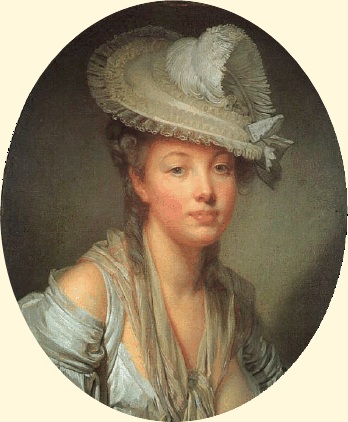After Madame Countess d’Aulnoy left France, due to a scandal between d’Aulnoy’s mother and husband, she returned to Paris several years later looking for a fresh start. She found a fresh start as she began her writing career. d’Aulnoy, born in Normandy in 1650 or 1651, had a difficult childhood as her father died when she was young. But, she was taught many languages, gained knowledge of many types of literature, and developed a love of Norman folktales, when she was educated by her aunt shortly after her father’s death. This introduction to literature at an early age contributed to her ability to give the reader exactly what they were looking for in a story, realism.
d’Aulnoy was able to give the people the realism they wanted by linking her novels to events relevant to the time period. As referenced in The Dictionary of Literary Biography, d’Aulnoy used the global interest in the death of Marie-Louise d’Orleans to base her novel, Memories de la cour d’Espagne. (Stedman, 2003) d’Aulnoy recognized the popularity of d’Orleans death and was able to convert it into a story that people would want to read. d’Aulnoy did this once again with the novel, Le Nouveau Gentilhomme bourgeois. The Dictionary of Literary Biography writes that, d’Aulnoy, “plays on the rising insecurities of the French aristocracy” (Stedman, 2003). This novel was written during a time of economic trouble in France. d’Aulnoy created characters that had the same these same monetary difficulties as the people. By providing the people with stories that they could relate to, d’Aulnoy was able to gain popularity.
 Out of all her works, d’Aulnoy’s most popular was Les Contes de fees, a collection of fairytales. Fairytales were a new genre for d’Aulnoy, but she once again succeeded in pleasing the public; the novel was immediately popular, and continues to be her best known work. An Answers.com article states that the popularity of her fairytales can be attributed to the use of “sentimental realism” (Seifert). d’Aulnoy’s stories focus a lot on the emotions of the characters, making them more realistic to the reader. By once again creating realistic scenarios and characters, d’Aulnoy’s fairytales became her most successful works.
Out of all her works, d’Aulnoy’s most popular was Les Contes de fees, a collection of fairytales. Fairytales were a new genre for d’Aulnoy, but she once again succeeded in pleasing the public; the novel was immediately popular, and continues to be her best known work. An Answers.com article states that the popularity of her fairytales can be attributed to the use of “sentimental realism” (Seifert). d’Aulnoy’s stories focus a lot on the emotions of the characters, making them more realistic to the reader. By once again creating realistic scenarios and characters, d’Aulnoy’s fairytales became her most successful works.d’Aulnoy was able to convert events from her personal life and those of society into well written novels. This use of realistic depiction of characters and events that the public could relate to, led to her being a memorable French writer.
Works Cited
. "Marie-Catherine Le Jumel De Barneville Comtesse D’Aulony (1650 or 1651-1705)". Seventeenth-Century French Writers. Ed. Francoise Jaouen. Dictionary of Literary Biography Vol. 268. Detroit: Gale, 2003. 12-18. Dictionary of Literary Biography Complete Online. Gale. University of New Hampshire. 20 February 2011 <http://galenet.galegroup.com/servlet/DLBC_Online/durh54357/BK1560055003>.
Seifert, Lewis C. "Marie-Catherine Le Jumel De Barneville Aulnoy: Information from Answers.com."Answers.com: Wiki Q&A Combined with Free Online Dictionary, Thesaurus, and Encyclopedias. Web. 20 Feb. 2011. <http://www.answers.com/topic/marie-catherine-le-jumel-de-barneville-aulnoy>.

No comments:
Post a Comment